This lemon sheet cake recipe has a lot of delicious going on! It’s a super easy whole boiled lemon cake, with the added punch of a tangy lemon curd, in the cake and the cream cheese frosting.
In my never ending search for a truly lemon-ey cake I discovered the Sicilian boiled lemon cake, Torta alle Mandorle e Limoni. My take on this classic is now the starting point for all my lemon cake recipes. In this version I have upped the lemon volume even more by swirling lemon curd through the cake batter. And my recipe for lemon curd uses a never-fail method.
The vanilla cream cheese frosting ensures that the sweetness level of the frosted cake stays in check. I’ve finished off the batch of lemon curd by also swirling it through the frosting.
Cake ingredients
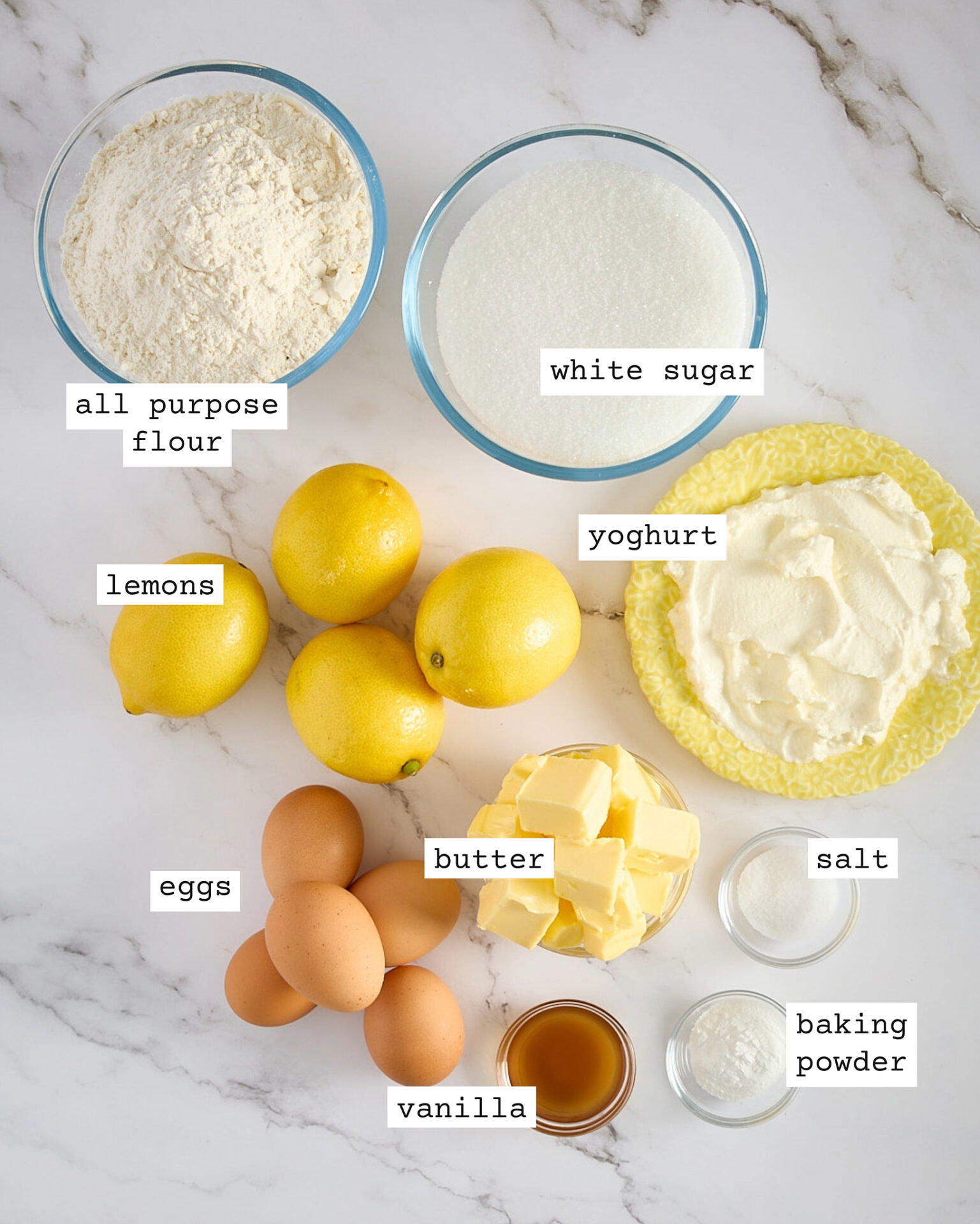
Boiling the lemons
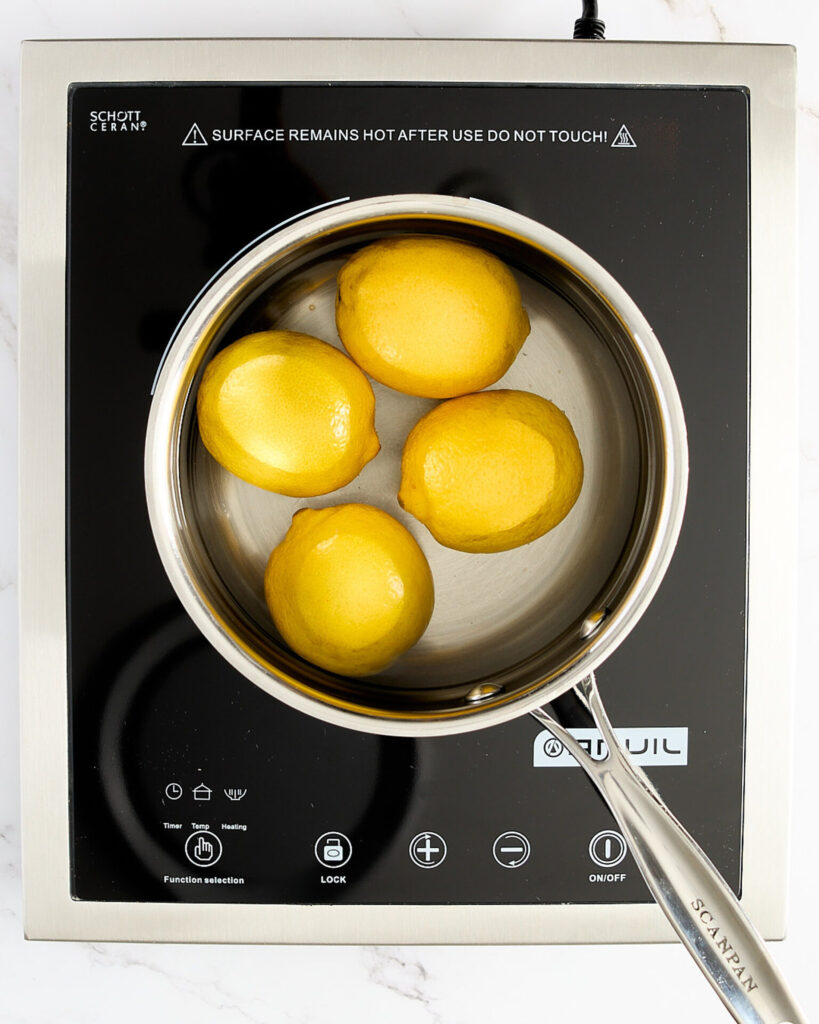
There is no joking here, you do boil the lemons for this lemon sheet cake recipe.
The recipe calls for 450g of lemons, which is 3-4 medium sized lemons. I would get the extra lemon as you don’t want to be caught short when you weigh the final pureed lemon. You need a net amount of 320g of pureed cooked lemon and you may have a bit leftover.
Place the lemons in a tight-fitting pan and cover with cold water. You want a tight as possible fit, so they don’t bob around at the surface and potentially break open as they soften up.
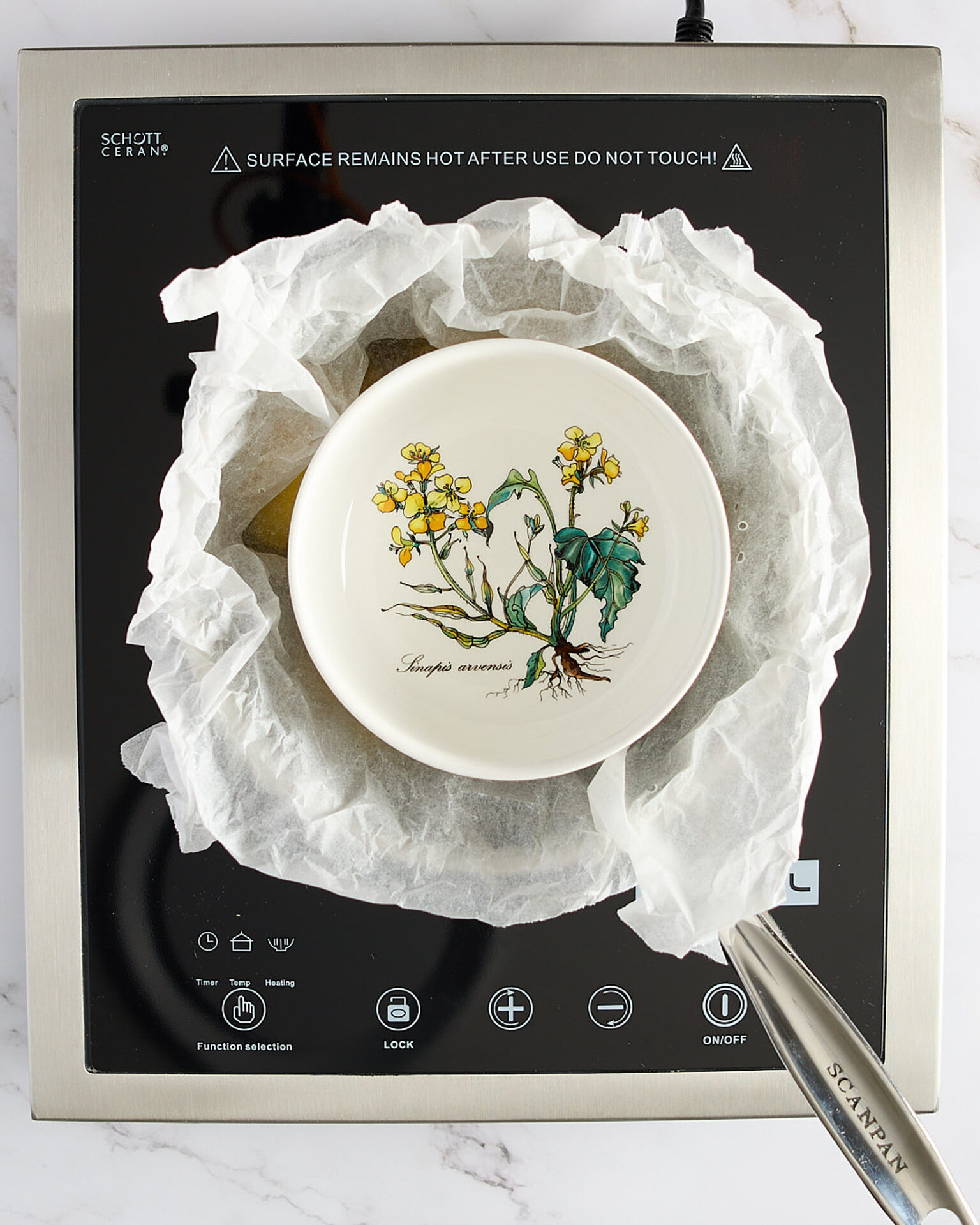
Then cut a piece of baking paper slightly larger than the pan, crumple it up and the smooth it out a bit. Tuck the baking paper around the lemons leaving any extra paper facing upwards.
Place a heat proof bowl on the baking paper to weigh the lemons down. You want them entirely submerged.
Bring to the boil slowly and then reduce to low so that the water is just simmering. If you boil the lemons too vigorously, they will split open and lose all their juice into the water.
Simmer 40-50 minutes until the lemons are soft and the skin indents easily if you prod it. Gently transfer lemons to a shallow bowl and cool to room temperature. Discard cooking water.
Processing the boiled lemons
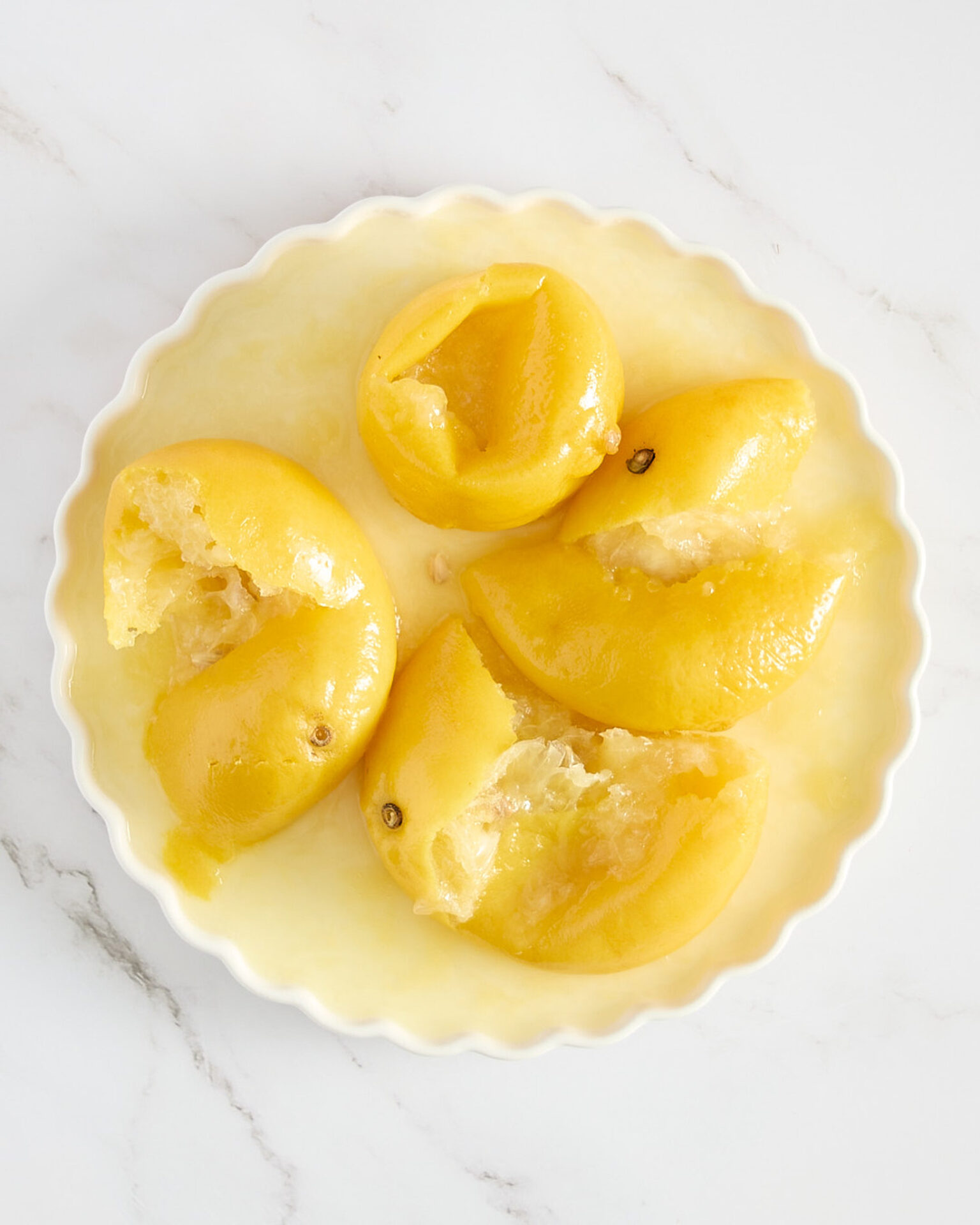
Once they have come to room temperature, break up the lemons, removing all seeds and the toughest central pith. Don’t refrigerate the lemons as you want all the ingredients at room temperature.
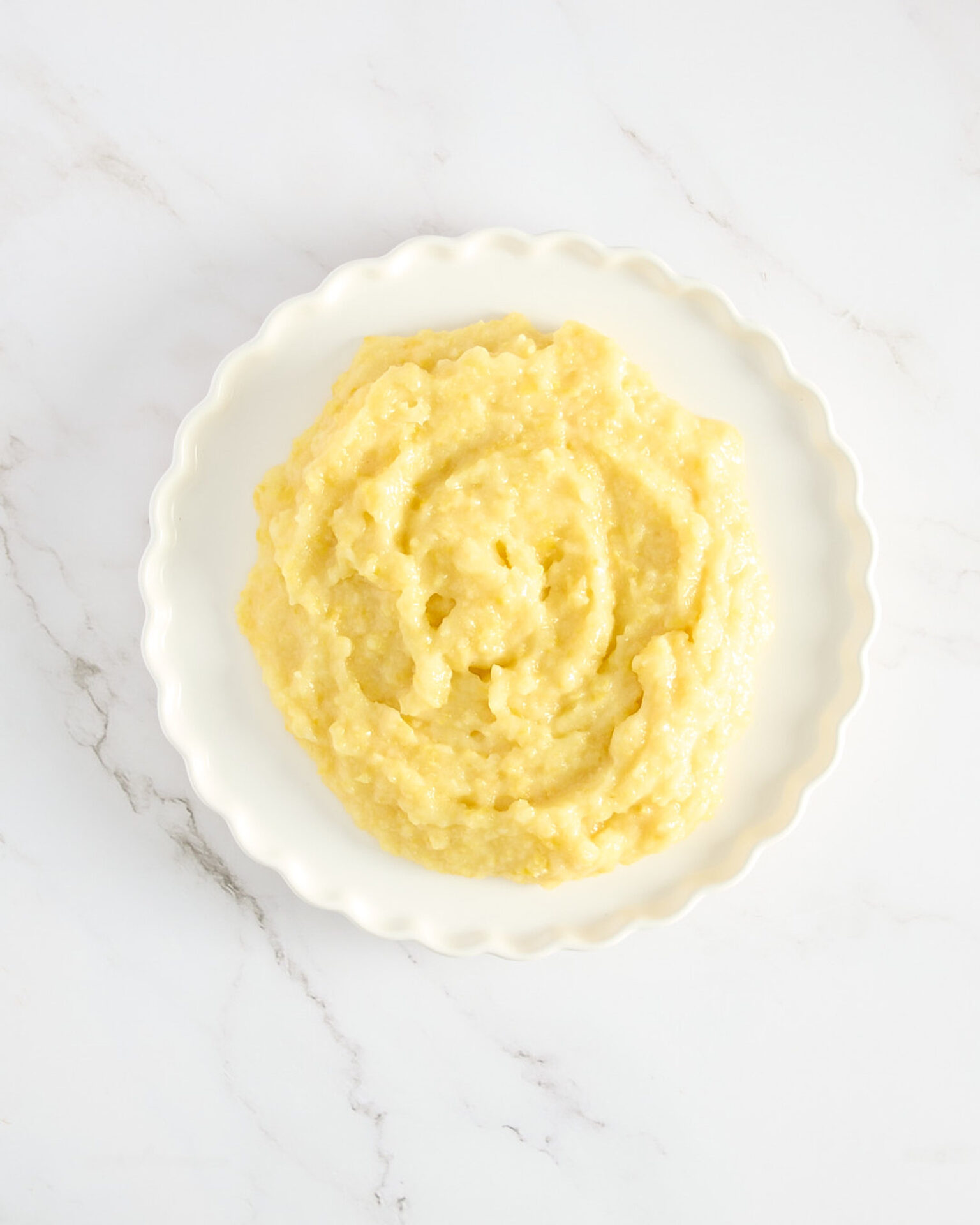
Once at room temperature, process the lemons in a food processor or blender. Scape down between pulses and check for large chunks of peel. You want to get the puree as smooth as possible – not chunky!
Measure out 320g of pureed lemon and discard any leftover puree. Then follow the steps in the recipe below to incorporate the puree into the cake batter.
I have yet to try and use up the small amount of leftover pureed lemon. I’m sure it works fine to flavour a glass of water or maybe use in a salad dressing.
Swirl lemon curd into the cake batter
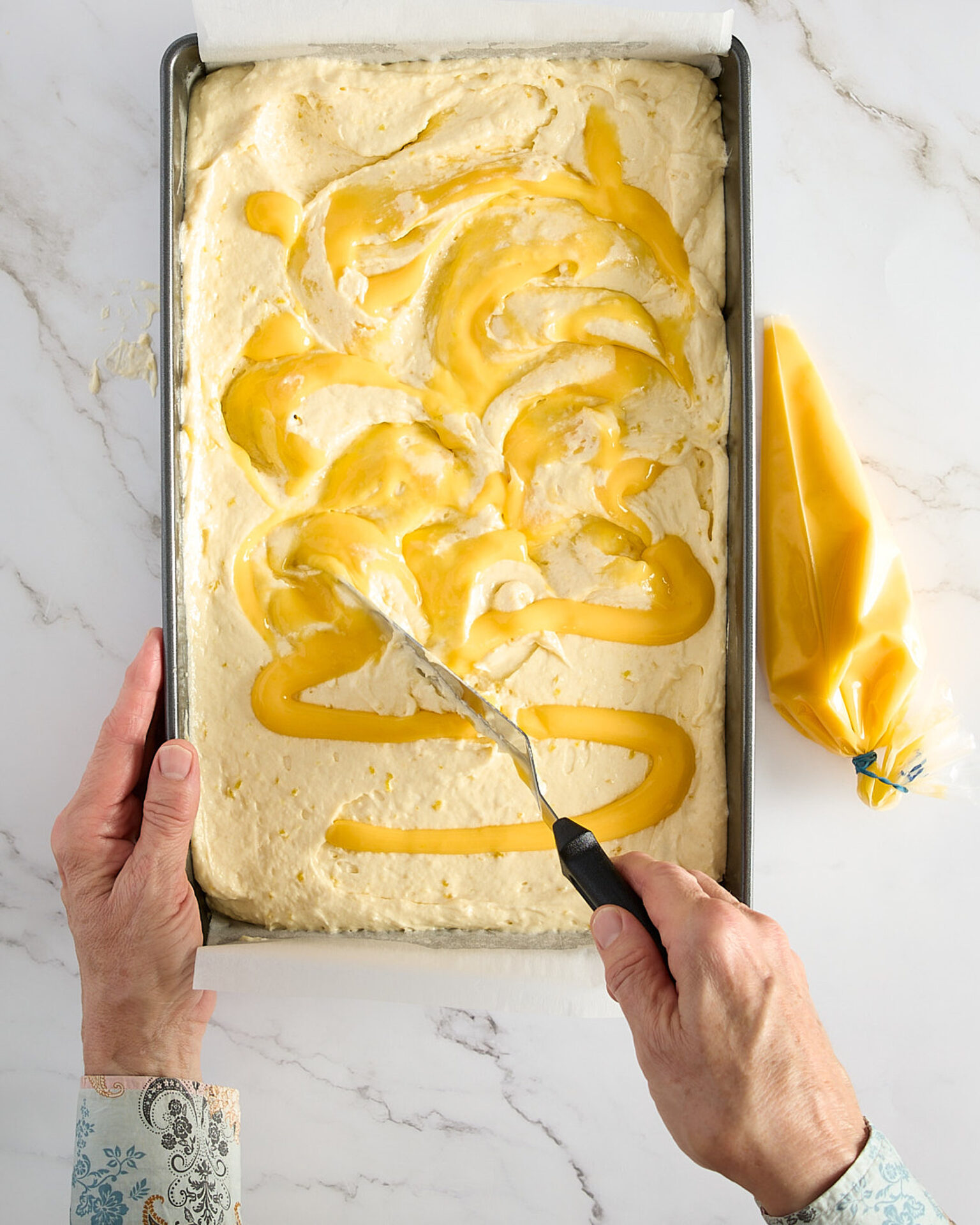
Before starting the cake batter, preheat the oven to 155°C fan forced (175°C conventional).
This lemon curd swirled cake works well in a rectangular cake pan that is 5cm x 25cm x 23cm (or thereabouts). I use a spray oil or butter to grease the pan well. Then measure out and cut baking paper to go across the pan lengthwise and up both ends. This ensures that your cake never gets stuck in the pan.
To make sure your batter doesn’t split start with your ingredients at room temperature. Make the cake batter according to the instructions below. Fill the pan and level off the batter with an offset spatula.
I fill a large piping bag with the curd (no tip needed). Cut the end off the piping bag to create a 1cm hole. Then pipe half of the lemon curd in lines across the batter, clip the end of the bag. Next swirl the curd into the batter gently with a spatula.
Bake the lemon curd sheet cake
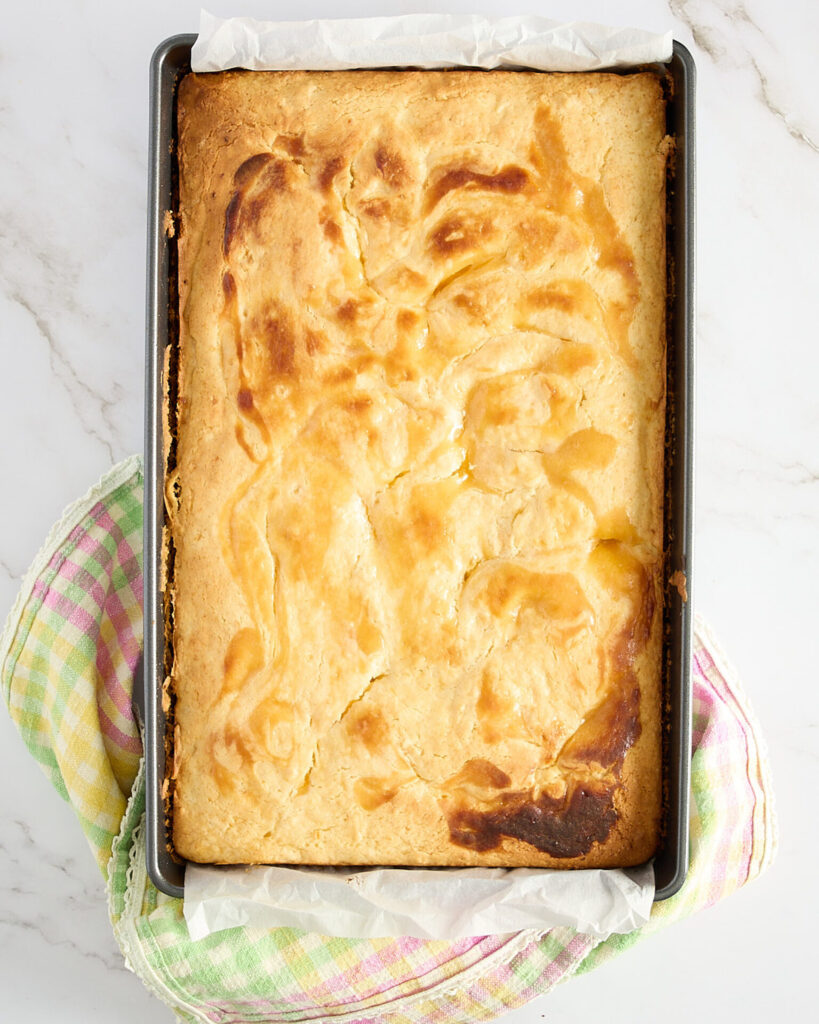
Bake the lemon curd swirled cake at 155°C fan forced (175°C conventional) for 35-40 minutes. To test if it’s baked, use a cake tester or skewer and if it comes away with just a few crumbs of cake stuck to it, the cake is baked.
While the cake is baking get started on the vanilla cream cheese frosting.
Vanilla cream cheese frosting ingredients
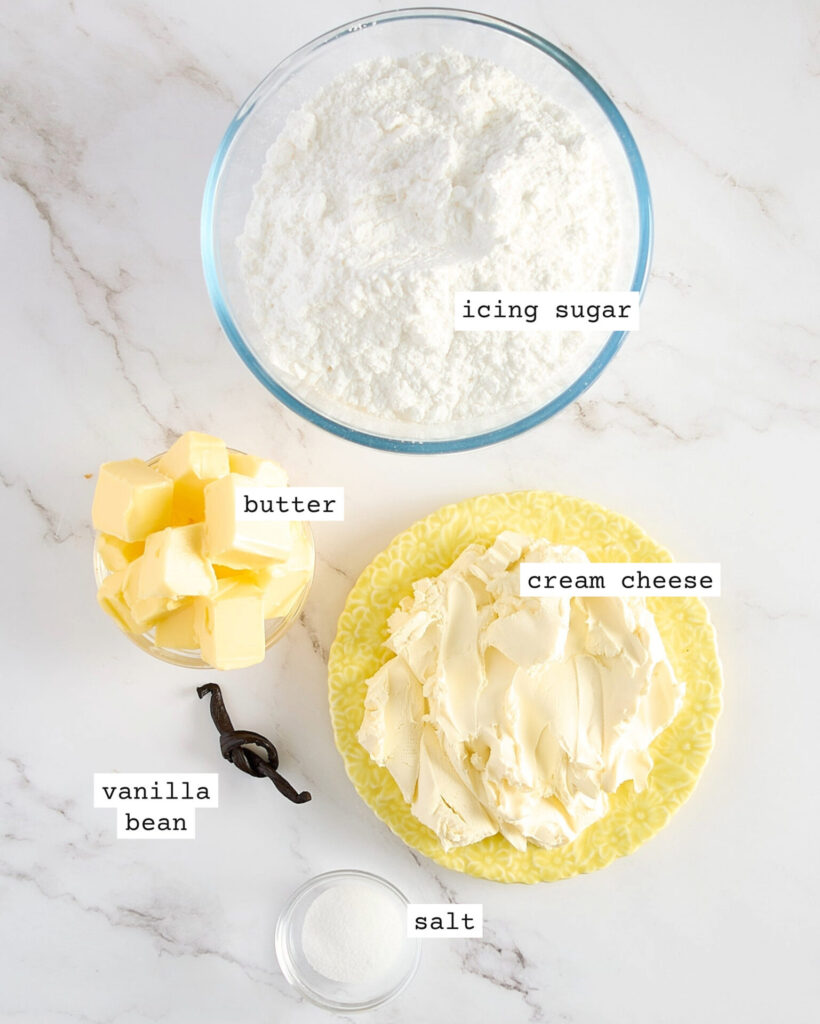
The secret to perfect cream cheese frosting!
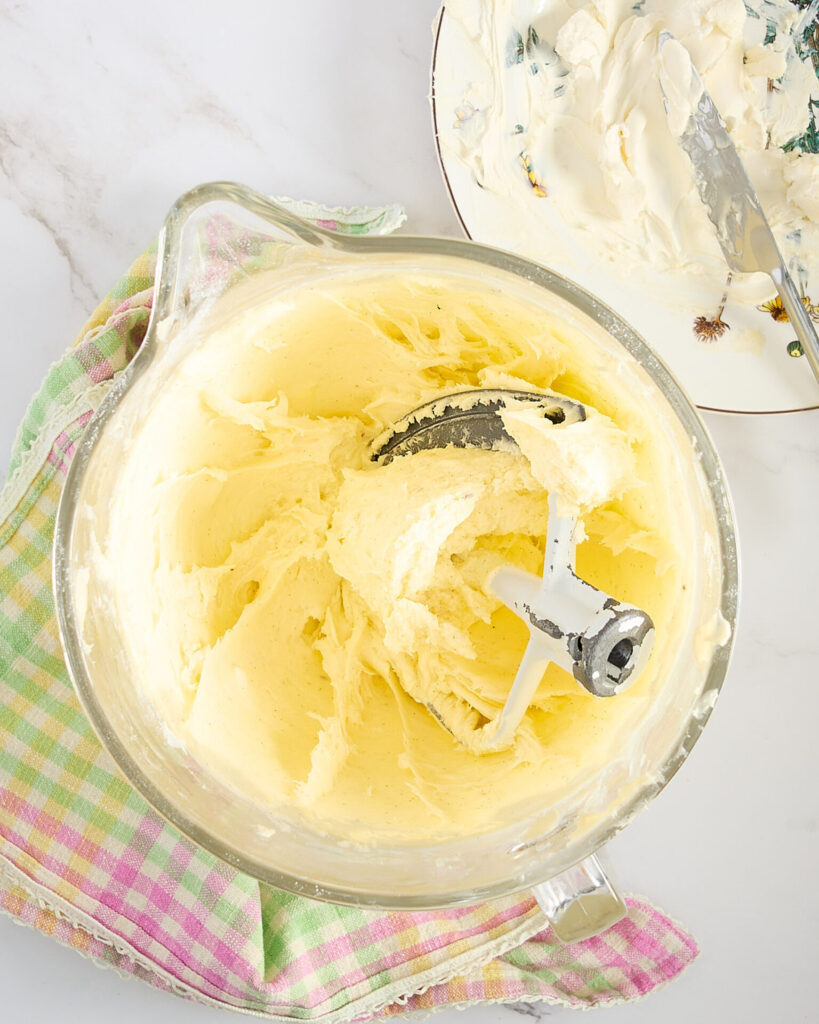
This lemon sheet cake recipe includes the ingredients and method for a lemon curd cream cheese frosting.
Frosting recipes generally call for the butter to be at room temperature. Certainly, the cream cheese frosting recipes I have used in the past also say the cream cheese needs to be at room temperature. But this has never delivered a frosting that I’m 100% happy with. Usually, I find the frosting is too runny and almost appears split.
I have discovered that you’ve got to break the rules with cream cheese frosting and keep both the butter and the cream cheese cold. This results in a much firmer frosting that is super easy to use and creates a great finished look to your cake. The cold butter and icing sugar are beaten together first. Then, to prevent lumps when adding the cold cream cheese, smear it across a plate first and then add it gradually as curls of cream cheese to the butter and sugar mixture with the mixer on medium.
This is not a recipe for low fat or spreadable cream cheese. You need to use the full fat ‘original’ Philadelphia cream cheese.
Frosting the whole lemon cake
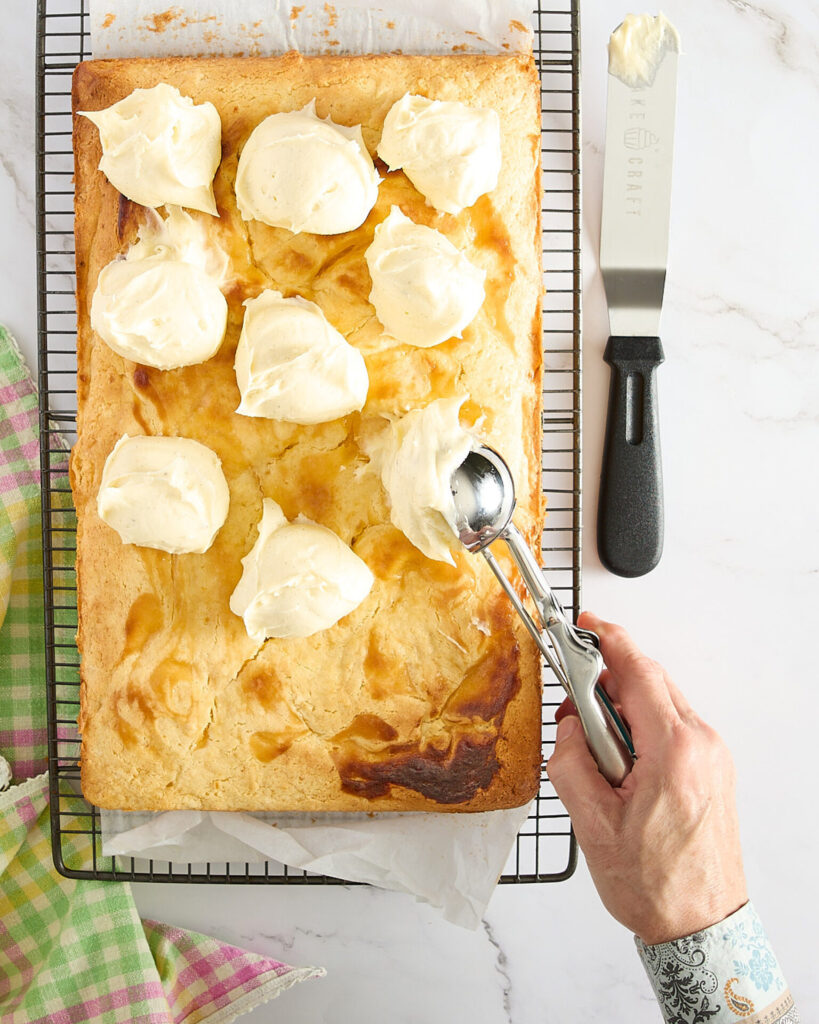
Using an ice cream scoop to distribute the vanilla cream cheese frosting helps to get an even layer of frosting and reduces the risk of getting cake crumbs in your frosting.
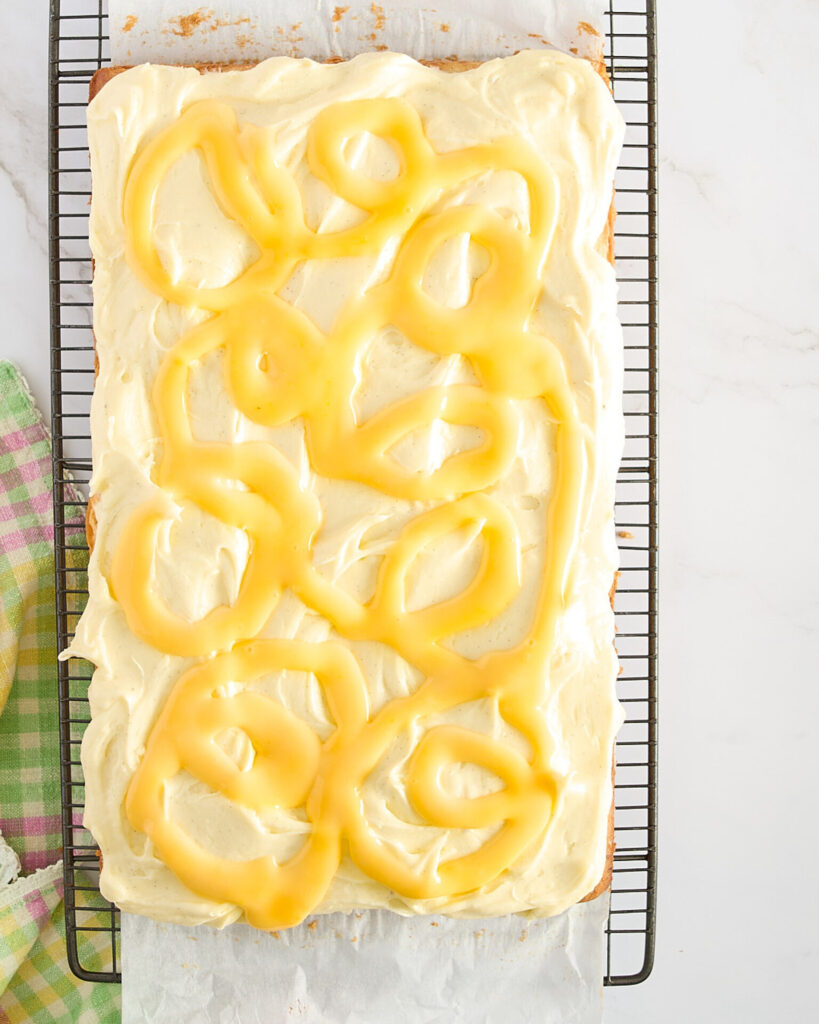
Pipe the remaining lemon curd in swirls across the top of the frosted cake.
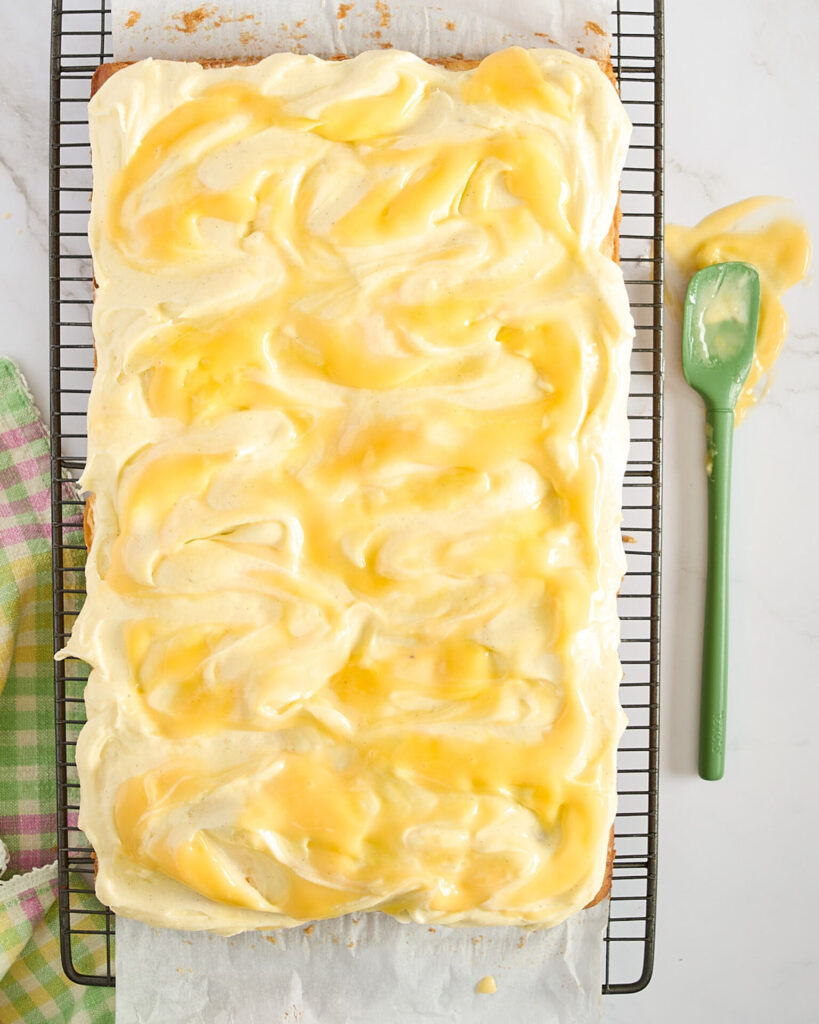
Finish the lemon curd cream cheese frosting by lightly swirling the curd through frosting with a spatula.
Finally, add any extra décor to your taste. I have finished the cake with some poppy seeds, mini fresh lemon wedges and edible flowers.
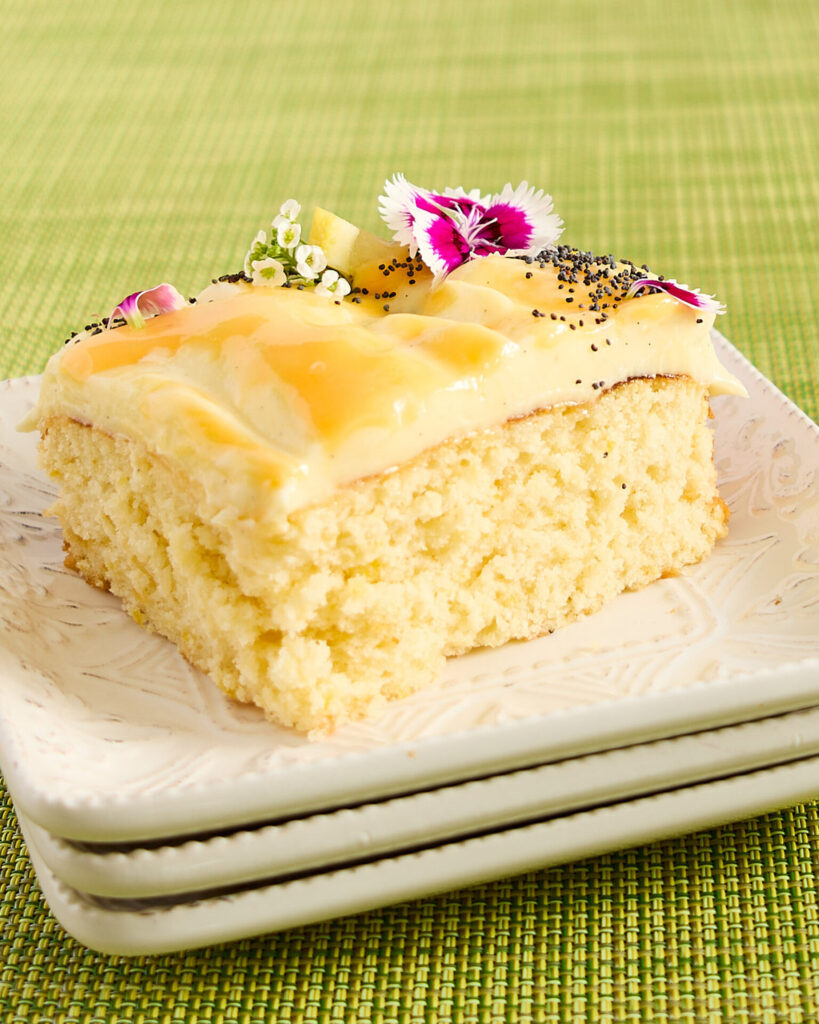
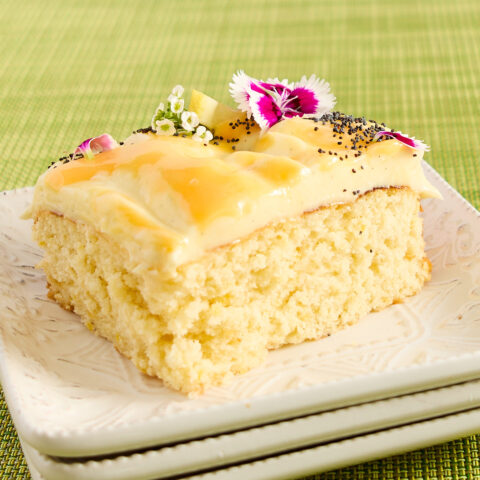
Lemon Curd Swirled Sheet Cake
Equipment
- 5cm x 25cm x 23cm baking pan
- Medium sized pot
- Food processor or blender
- Stand mixer or hand mixer
- Large disposable piping bag
- Offset spatula
Ingredients
Lemon curd:
- 1 batch Lemon Curd
Whole lemon cake:
- 4 large eggs + 1 yolk (room temperature)
- 1 ½ teaspoon vanilla essence
- 450 g white sugar
- 415 g all-purpose flour
- 18 g baking powder (1 tablespoon + ¾ teaspoon)
- ¾ teaspoon salt
- 150 g unsalted butter (room temperature)
- 150 g Greek full fat yoghurt (room temperature)
- 450 g whole lemons (4 medium lemons)
Vanilla cream cheese frosting:
- 250 g Philadelphia original cream cheese
- 155 g unsalted butter
- 415 g pure icing sugar
- ¼ teaspoon salt
- 1 vanilla bean (or 2 teaspoons vanilla essence)
Instructions
Preparing the lemons:
- Wash whole lemons and place in a tight-fitting pan and cover with cold water.
- Cut a piece of baking paper slightly larger than the pan, crumple it up, smooth a bit and tuck it over the lemons with any extra paper facing upwards.
- Place a heat proof bowl on the baking paper to weigh the lemons down. You want them entirely submerged.
- Bring to boil slowly and then reduce to low so that the water is just simmering. If you boil the lemons too vigorously they will split open and lose all their juice.
- Simmer 40 – 50 minutes until the lemons are soft and the skin indents easily if you prod it.
- Gently transfer lemons to a plate cool to room temperature. Discard cooking water.
- Meanwhile preheat the oven to 155°C fan forced (175°C conventional).
- Break up the lemons, removing all seeds and the toughest central pith.
- Process in a food processor or blender, scraping down as you go. You want as pretty smooth puree with no big chunks of peel.
- Measure out 320g of pureed lemon and discard any leftover puree.
Making the cake:
- Prepare the baking pan (see notes).
- Sift the flour, baking powder and salt into a small bowl.
- In the bowl of the stand mixer add the butter and sugar. Beat on medium high until super fluffy and a pale yellow colour. Scrape the bowl down.
- Beat the eggs, yoghurt & vanilla together in a small jug and to the butter and sugar mix slowly on medium speed. Beat until egg fully incorporated and then scrape the bowl down.
- With the mixer on low, add flour in 3 batches, alternating with lemon puree. Mix until just combined each time.
- Then beat the batter on medium speed for a maximum of 30 seconds until batter is fully combined.
- Bake at 155°C fan forced (175°C conventional) for 35-40 minutes. Use a cake tester or skewer and if it comes away with just a few crumbs of cake, it’s done.
Vanilla cream cheese frosting:
- Sift icing sugar and salt into bowl of stand mixer.
- Add cold butter cut into small cubes & beat on medium until a smooth firm paste is formed.
- Split the vanilla bean in half lengthwise and scrape out vanilla seeds. Add the seeds (or vanilla essence) & beat briefly to incorporate on medium.
- Spread the cold cream cheese across a plate in a thin layer. Add it gradually to the bowl while mixing on low. Scrape down the bowl a couple times.
- This method helps to avoid lumps and keep beating on low until there are no lumps.
- Briefly mix for a few seconds on medium to make sure the frosting is completely smooth.
To assemble:
- Using an ice cream scoop or large spoon, deposit the frosting across the sheet cake.
- Smooth into an even layer with an offset spatula.
- Pipe the remaining lemon curd across the frosting in swirls.
- Gently incorporate the curd into the frosting with a small silicone spatula, making sure to not overmix so swirls of icing and curd are clearly visible.
- Decorate as desired.

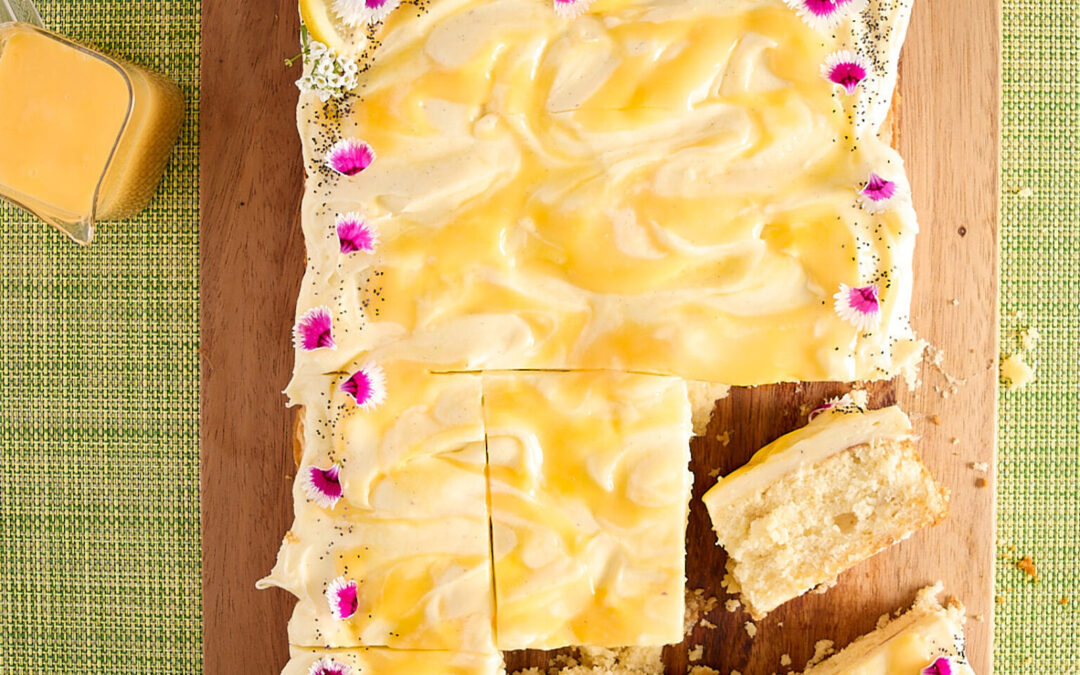
I need to try this GF for hubby…well maybe just for me. 😉